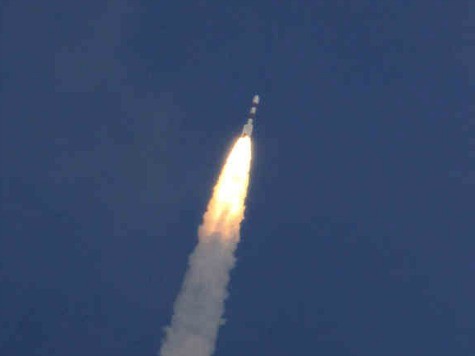(AP) India launches first mission to Mars
By KATY DAIGLE
Associated Press
NEW DELHI
India on Tuesday launched its first spacecraft bound for Mars, a complex mission that it hopes will demonstrate and advance technologies for space travel.
Hundreds of people watched the rocket carrying the Mars orbiter take off from the east-coast island of Sriharikota and streak across the sky. Many more across the country watched live TV broadcasts.
Officials at the space center described it as a “textbook launch.” If the mission is successful, India will become only the fourth space program to visit the red planet after the Soviet Union, the United States and Europe.
After 44 minutes, the orbiter separated from the rocket and entered into an elliptical path around Earth. Over the next 20-25 days, it will perform a series of technical maneuvers and short burns to raise its orbit before it slingshots toward Mars.
The 1,350-kilogram (3,000-pound) orbiter Mangalyaan, which means “Mars craft” in Hindi, must travel 780 million kilometers (485 million miles) over 300 days to reach an orbit around the red planet next September.
He congratulated the scientists for putting the mission together “in a very limited time.” The project began after the space agency carried out a feasibility study in 2010 after successfully launching a lunar satellite in 2008. Prime Minister Manmohan Singh announced the planned voyage to Mars only last year during his annual address to the nation.
Some have questioned the $72 million price tag for a country of 1.2 billion people still dealing with widespread hunger and poverty. But the government defended the Mars mission, and its $1 billion space program in general, by noting its importance in providing high-tech jobs for scientists and engineers and practical applications in solving problems on Earth.
Decades of space research have allowed India to develop satellite, communications and remote sensing technologies that are helping to solve everyday problems at home, from forecasting where fish can be caught by fishermen to predicting storms and floods.
The orbiter will gather images and data that will help in determining how Martian weather systems work and what happened to the large quantities of water that are believed to have once existed on Mars. It also will search Mars for methane, a key chemical in life processes that could also come from geological processes. Experts say the data will improve understanding about how planets form, what conditions might make life possible and where else in the universe it might exist.
The orbiter is expected to have at least six months to investigate the planet’s landscape and atmosphere. At its closest point, it will be 365 kilometers (227 miles) from the planet’s surface, and its furthest point will be 80,000 kilometers (49,700 miles) away.
___
Online: Indian Space and Research Organization: http://www.isro.org/
___
Follow Katy Daigle on Twitter at twitter.com/katydaigle

COMMENTS
Please let us know if you're having issues with commenting.